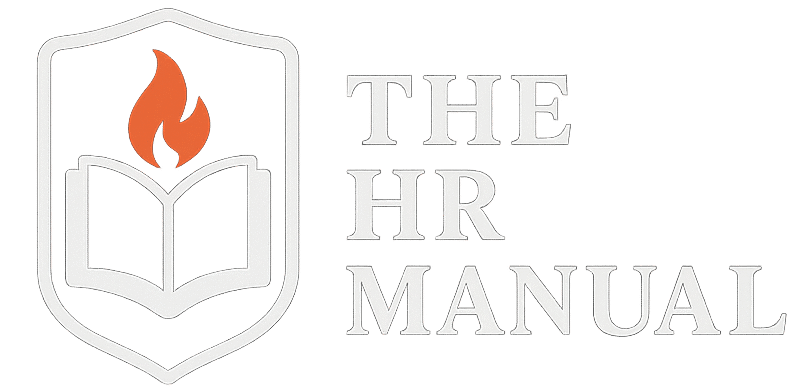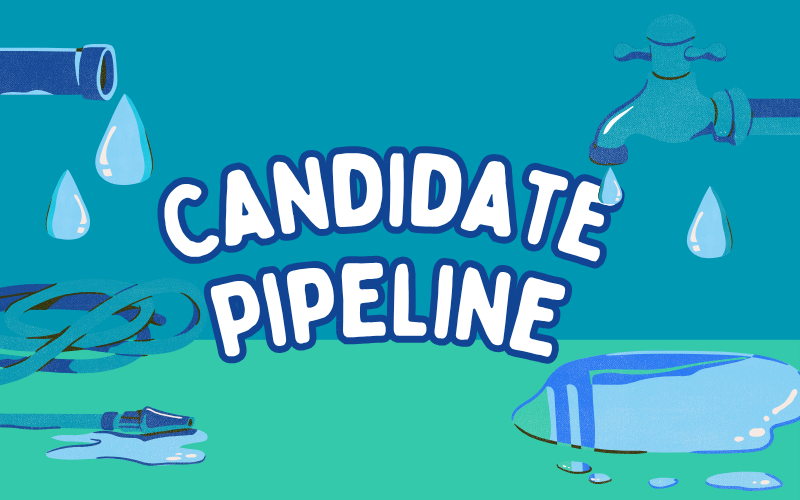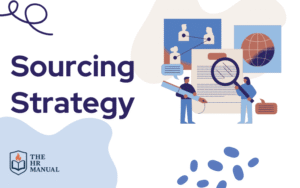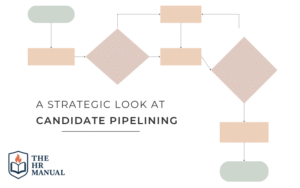When hiring a new employee is it is not just about the person who fits the description. As a talent professional you must consider the business’s needs, maintain momentum and ultimately creating a steady flow of qualifies candidates. It is important that you master the candidate pipeline quickly to fulfill your business’s needs in this modern recruiting landscape.
By this post, I will assume that you have been following along with my talent acquisition strategy and sourcing strategy pillar post. If you haven’t, please go back and read them. I explain how recruiting is not just a checkbox and give you the guidelines to hiring a successful candidate and reduce turnover. It’s a strategic system that drives business performance. And the candidate pipeline is the heartbeat of that system.
What Is a Candidate Pipeline and Why It’s Strategic
Let’s set the record straight. A candidate pipeline is not a talent pool. A pool is passive and it’s a list of people you’ve saved for later. A pipeline is active. It’s intentional. It’s built to move people from interest to engagement to offer. It’s a living system, not a stagnant folder of resumes.
If you build it correctly, your candidate pipeline becomes a well-oiled machine. Your recruiters will stay ahead of the hiring curve and will not need to scramble with a business need requires an additional hire. Remember, great candidates are rarely job hunting when you are hiring but if you’ve built the relationship ahead of time? You’re already halfway to the offer stage.
During a study across multiple industries, it was determined that employer branding and proactive pipeline management was found to significantly improve hire quality and time-to-fill (Wilden, Gudergan, & Lings, 2022). In short: pipelines reduce panic and panic hiring can costs companies money, culture, and momentum.

The Pipeline Framework: Build, Nurture, Convert
Building a healthy and flowing candidate pipeline comes down to three core phases: build, nurture and convert.
1. Build: Don’t Wait Until You’re Hiring
The build phase is where your pipeline begins. It’s where sourcing and segmentation come into play. You need to start identifying and attracting the types of talent you’ll need, not just today, but a quarter or two from now.
Start by:
- Mapping your critical roles and evergreen needs
- Use multiple sourcing channels like LinkedIn RPS, internal and external job boards, referrals and university networks to name a few.
- Using your current CRM to categorize candidates by skill, industries, location and where they are at in the pipeline stage.
Don’t just think about roles, think about personas. What kinds of people succeed in your org? Where do they hang out? What matters to them?
According to Jain & Singhal (2022), a sourcing process aligned with employer branding improves candidate quality and builds trust, two ingredients you want in your pipeline.
2. Nurture: Relationships > Transactions
This is where most pipelines go to die. Recruiters spend all their energy sourcing, but then let good leads go cold. That’s a wasted investment.
Nurturing is about keeping the conversation going. Not in a spammy way but in a human one. There is a huge difference between, “Just checking in” and “I was reading a Salesforce article and want to get your opinion on their new AI tool. I really hope everything is going well at your new position.”
Some simple nurture tactics:
- Always share personalized updates about your team and business
- Make sure you are sharing content such as whitepapers and webinars that are relevant to candidate.
- Be invested in the candidate’s education by asking what they’re learning, building, or exploring
Remember: pipelines aren’t just about candidates being ready for you. They’re about you being ready for candidates. That requires consistent engagement. Upadhyay & Khandelwal points out that you can lower sourcing costs and increase conversion rates when you are using nurturing tactics (2023).
3. Convert: From Interest to Offer
Timing is everything! Use the warm leads that you have been nurturing into a strong hire. It is rare that a role will open at the same time a strong candidate is available. If you have built a good relationship with a passive candidate, approaching them with a new opportunity will be natural and not transactional in nature.
Conversion tips:
- Revisit your pipeline before posting externally
- Prioritize candidates who’ve been consistently engaged
- Communicate clearly: “We’ve kept you in mind for this role—are you open to a conversation?”
What’s great about conversion from a pipeline is that you’re not starting from zero. These candidates already know your employer brand. They’ve been following your story. And most importantly, they trust you. That’s priceless in a competitive market.

Tools That Keep Your Pipeline Running Smoothly
Technology is super important. It is almost impossible to manage a pipeline that is at scale with a spreadsheet and word of mouth. Recruiters need effective tools that are designed for speed and personalization to be successful
Key tools:
- Recruiting CRMs: These are designed for pipeline management these are unlike ATS platforms, which are built for compliance.
- Email automation and campaign tools: These are key for nurturing techniques and employer branding.
- LinkedIn Recruiter, SeekOut, Entelo: Platforms such as these will help with sourcing and talent intelligence!
- Analytics dashboards: Can assist your team on tracking how your candidates are micing through your recruitment funnel and make sure that candidates are not getting stuck in your pipeline by tracking, time-in-pipeline.
CRMs and talent intelligence tools are playing a central role in determining pipeline health because recruiting technology is evolving at a rapid pace (Bersin 2021)
Pipeline Metrics That Actually Matter
Here’s the thing: If you’re not measuring your pipeline, you’re not managing it.
Some of the most important candidate pipeline metrics:
- Pipeline velocity: How fast are candidates moving from one stage to another?
- Time-in-stage: Are candidates getting stuck at certain points?
- Pipeline coverage ratio: Do you have enough qualified candidates for each high-priority role?
- Engagement rate: Are your outreach and nurturing efforts generating responses?
These metrics are the bridge between recruiting and the C-suite. When you can show pipeline strength and movement, you’re speaking the language of business not just HR.
Common Pipeline Killers
Even the best recruiters fall into traps. If you’re serious about mastering the candidate pipeline, here’s what to watch out for:
- Waiting for roles to open before sourcing
This is the biggest red flag. Build pipelines now for roles you know will open later. - Letting passive talent go cold
If you’re not nurturing them, someone else is. - Using your ATS as a CRM
They serve different purposes. Don’t confuse compliance management with relationship management. - No segmentation strategy
All talent is not equal. Segment your pipeline by role, location, readiness, or strategic value. - No feedback loops
Keep your pipeline clean. Remove uninterested candidates and update profiles regularly.
Final Thoughts: The Best Candidates Don’t Wait
Here’s the hard truth: the best candidates are being courted all the time. If you’re not actively managing a candidate pipeline, you’re not even in the conversation.
Building, nurturing, and converting talent takes time but it’s time worth spending. Because when a key role opens, and you already have someone warm, qualified, and engaged in your pipeline? That’s not luck. That’s mastery.
If you’re serious about scaling your hiring function and reducing time-to-fill, the pipeline is where your energy should go. It’s the natural next step in building a smarter sourcing strategy, reinforcing your recruitment funnel, and aligning with your broader talent acquisition strategy.
Because in modern recruiting, speed matters. But readiness? That’s what wins.
References:
Bersin, J. (2021). HR technology market 2021: The definitive guide. Josh Bersin Company. https://joshbersin.com/hr-tech-2021/
Jain, R., & Singhal, M. (2022). Strategic talent acquisition and employer branding: A study of modern recruitment practices. International Journal of Human Capital and Information Technology Professionals, 13(3), 1–15. https://doi.org/10.4018/IJHCITP.313049
Upadhyay, A. K., & Khandelwal, K. (2023). Leveraging talent intelligence for proactive recruitment: A data-driven approach. Journal of Human Resource and Sustainability Development, 11(1), 1–14. https://doi.org/10.4236/jhrss.2023.111001
Wilden, R., Gudergan, S., & Lings, I. (2022). Employer branding and its effect on talent pipelines: Evidence from multi-industry analysis. Journal of Business Research, 145, 346–357. https://doi.org/10.1016/j.jbusres.2022.03.005



